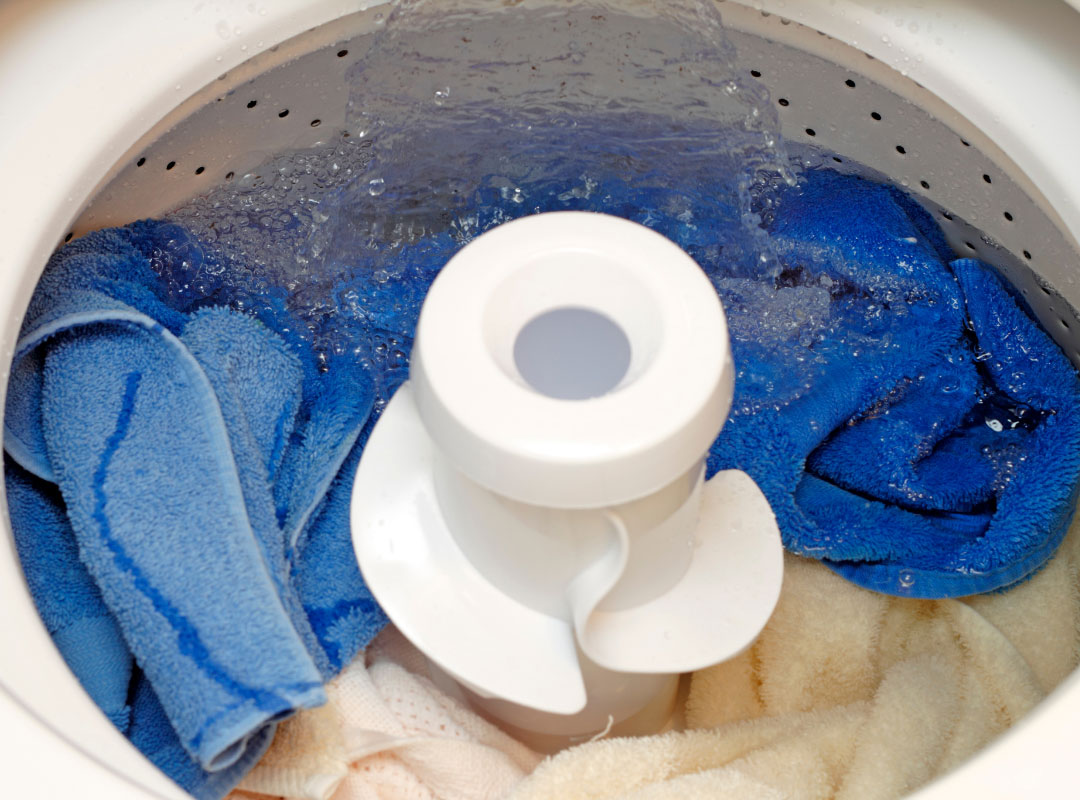Aussie Washers: Common Problems & Maintenance Guide

For Aussies, with our busy lives and sandy adventures, keeping our washing machines running smoothly is essential. It’s in our best interests to keep these vital, time saving machines in good working order, but many of us don’t give our washing machines a lot of care and attention. This guide dives into common washing machine maintenance problems, along with essential maintenance tips to keep your laundry hero running strong for years to come..
Common washing machine problems
1. “My machine isn’t working”
The first check here is that it’s plugged into power and turned on. If it is, check your electrical circuit breaker box and make sure the fuses haven’t blown. If your machine still won’t work, the lid switch may be faulty and need replacing, or it could just be dirty and need a wipe.
2. “Help! There’s no water!”
If the machine is on, but there’s no water (or very little water) flowing, check the water valves. You have a hot water valve, and a cold-water valve, and some washing machines need both on, even if you only wash your clothes in cold water. Make sure they are both turned on far enough that adequate water flow can get to the machine. A blockage in the filter can also impact water flow – see our essential washing machine parts and maintenance tips below on how to fix this.
3. “My machine is making loud noises.”
Often this may happen due to the machine being overloaded, or wet clothes shifting during the wash cycle around the agitator. Open the lid, and redistribute the clothes so the machine levels out, to see if this resolves the issue. However, if the noise is more like screeching, it may be a mechanical issue with the machine’s inner workings, which will need a service technician to look at.
4. “The final cycle is done, but my clothes are still too wet.”
This can happen if the drain hose is bent, or the water pump clogged – check out our essential tips below on how to check and repair this.
Essential tips for maintaining your washing machine
Tip #1: Give it a good, deep clean
Many assume that because your washing machine has water running through it regularly, that the cleaning takes care of itself. But, just like any machine, your washing machine needs a good, deep clean every so often which is an opportunity to check some of your washing machine parts and see if they need replacing.
Inner tub/drum cleaning
The inner tub/drum of your washing machine can get a build up of bacteria, mould and scaling. Giving it a good hot rinse with either some detergent, bleach or vinegar and baking soda will go a long way to keeping your washed clothes coming out fresh and actually clean.
Detergent dispenser cleaning
You should also remove the machine’s detergent dispenser and give it good clean and scrub. An old toothbrush is a great way to get into the nooks and crannies, to remove any built-up gunk.
Rubber seal cleaning and checks
The rubber seals (also called gaskets) are also prone to a build-up of mould, bacteria and dust (not to mention wear and tear) so it’s a good ideal to clean and check these periodically. Rubber seals are a common washing machine part that’s good to monitor, in case they’re perishing and need replacing.
Filter cleaning
Most washing machines have a filter designed to trap lint, dirt, hair and excess detergent so that your machine doesn’t get clogged up. Where the filter is located will be brand dependent, and stated in the manufacturer’s manual, but can usually be found:
- At the front of the machine behind a hatch
- Under the cover of the machine’s agitator
- Along the top rim of the drum, or
- At the end of the drainage hose
A clogged filter will impair drainage and leave lint on your clothes instead of rinsing it away, so checking it every so often and cleaning it under hot water is a good idea. If left for too long, this will impact your machine’s performance, and can even cause damage to the pump and agitator.
Tip #2: Check the hoses
Your washing machine hoses are responsible for keeping the water flowing in and out of the machine smoothly, and you’ll certainly know about it if they stop working as they should. Over time, hoses can become damaged, cracked or loose, and can get clogged (especially if your filter hasn’t been cleared in a while).
Keep an eye on the condition of the hoses, and replace if they’re showing signs of damage. If you find a hose is blocked, remove it and try to clean out whatever is blocking it.
Tip #3: Use the right detergent for your machine
Different detergent types aren’t just a gimmick – there’s a reason why there are detergents and powders for front loaders and for top loaders.
Front loader washing machines need lower sudsing detergents or powders, and while most front loaders have a small overflow system to funnel out too many suds, it can overflow and lead to overflowing puddles of soap leaking out of your machine, either from the front or the back.
Quality Washing Machine Parts and Service
At Wayne’s Wholesale Spares, we stock thousands of branded and generic washing machine parts which you can buy online here, order over the phone or buy directly from our friendly team if you pop into our Sydney warehouse.
If you can’t fix it yourself, then we can put you in touch with one of our recommended, trusted service technicians in your area. For all your washing machine parts and maintenance needs, get in touch with us today.
Australia’s Fast Appliance Parts Delivery
We’ll ship it to you for next day delivery to most parts of Australia. Or you can call in to our Sydney warehouse and collect it.
